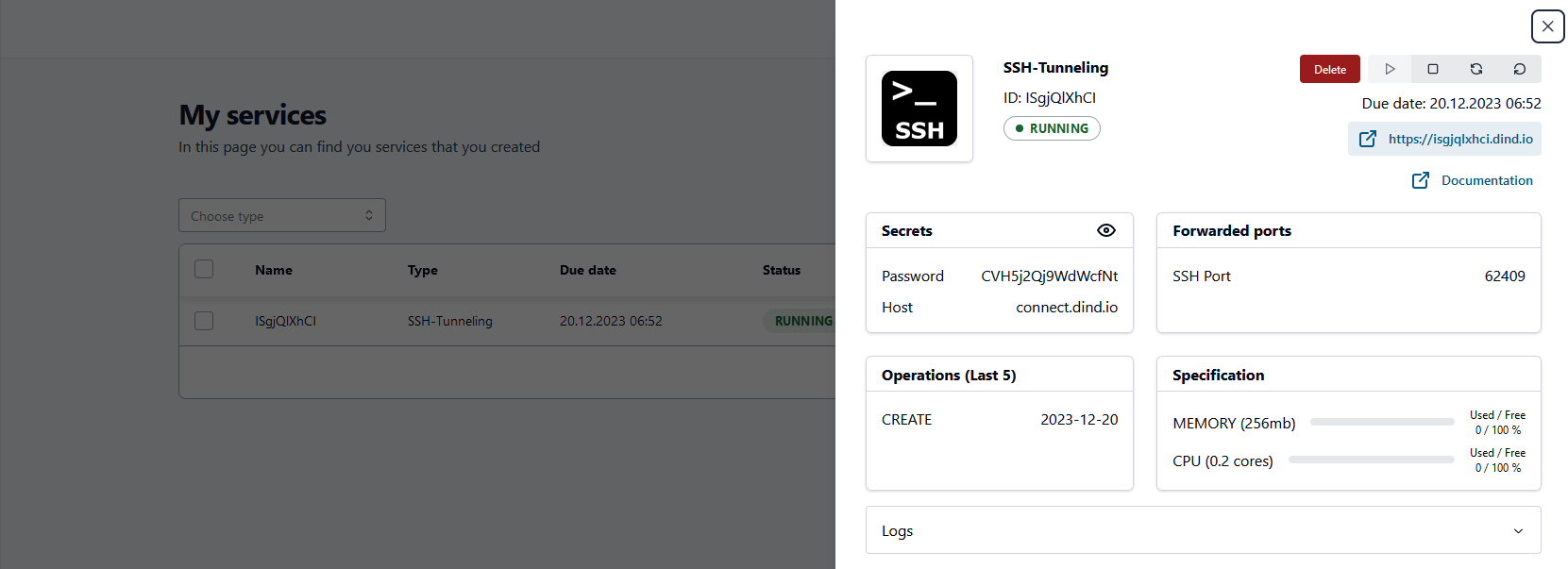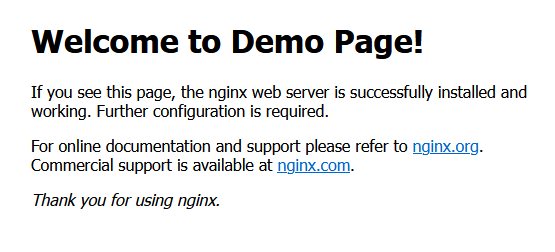SSH-Tunneling
SSH port forwarding is a mechanism in SSH for tunneling application ports from the client machine to the server machine.
If you want to use "SSH-Tunneling", you should press the "Create" button in front of "SSH-Tunneling" in the "Services section", as shown in the image.

Then, if you are sure, you should continue by clicking "Continue". If you accidentally pressed the button, you can stop the process by clicking "Cancel".

You will be automatically directed to the "My services" section.
Here you must wait for your service to be activated. The service will be activated in a short time and you will be notified.

You can now view the settings of the service by clicking on the "Service" you have created.
In the "Info" section, you can monitor many details about your service, such as its settings, status, recent log records, and system values consumed.

Demo
I have installed Nginx on my virtual machine and this nginx is serving by listening on port 80
Let's define it with the images below.
Additionally, let's see what nginx returns by making a simple curl request to localhost.

Now let's publish the port we use locally through the SSH-Tunneling service we created. For this, execute the following command and enter the password.
ssh -R 5000:localhost:80 [email protected] -p 62409
5000 and localhost - Do not change (It is static.)
80 - If your application runs from another port, replace port 80 with that port.
public - Username (It is static.)
connect.dind.io - The link to join is in the "Secrets" section.
62409 - In the "Forwarded ports" section, "SSH Port" is listed as the port. It is different for each service.
Password - It is mentioned in the "Secrets" section.
By clicking on the link shown in the "Location" section of the service we have already created, we can specify that the port working in our local is published.

Do not forget to add the *.dind.io domain to the Allow list in the application!
Operations that can be performed on the "SSH-Tunneling" service are the same as with other services.
If you are having problems, please do not hesitate to contact us. We always keep the email address "[email protected]" open to see your feedback immediately.